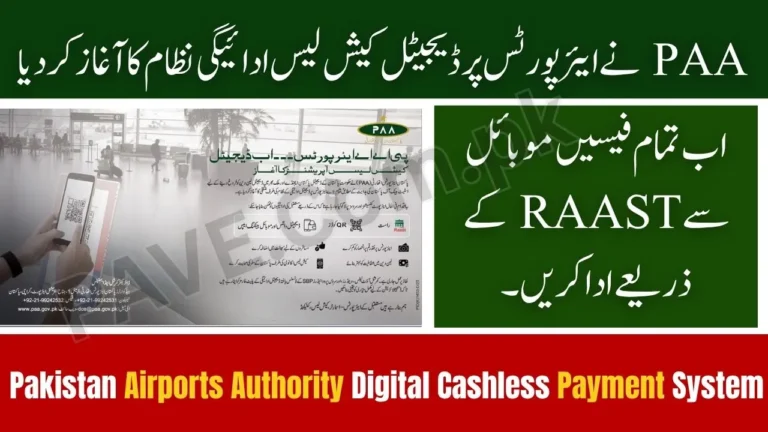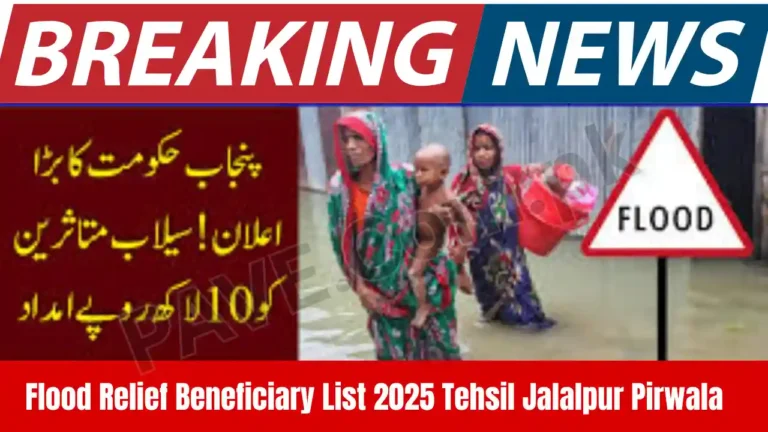BISP 8171 Financial Support for Flood Victims How to Apply for 2025 Relief Package
BISP 8171 Financial Support for Flood Victims has faced recurring natural disasters over the years, and floods in 2025 have once again caused severe damage to homes, crops, and livelihoods. In response, the Benazir Income Support Program (BISP) 8171 has introduced a special financial relief package to support flood-affected families. This initiative aims to provide timely financial aid to help vulnerable citizens recover from flood losses.
In this comprehensive guide, we will explain everything you need to know about the BISP 8171 flood relief package 2025, including eligibility, step-by-step application process, common mistakes, and solutions. By following this guide, flood victims can ensure their applications are successful and receive much-needed support.
Check Also: How to Apply for BISP 8171 Women’s Quota in 2025
What is BISP 8171 Flood Relief Package 2025?
BISP 8171 is a government-led social welfare initiative designed to provide financial assistance to low-income families, especially in emergencies. The 2025 flood relief package is a special extension under BISP to support families affected by floods. The aid is intended to help victims meet basic necessities such as:
- Shelter repair or temporary housing
- Food and water supplies
- Medical care and health expenses
- Recovery of lost belongings
This package emphasizes women empowerment, as funds are typically transferred to female heads of households, ensuring better household management and resource allocation.
Eligibility Criteria for Flood Relief under BISP 8171
Before applying, ensure you meet the following eligibility criteria for the 2025 flood relief package:
- Residency in Affected Areas – Only residents of officially recognized flood-hit districts are eligible.
- Pakistani Citizenship – Applicants must hold a valid CNIC (Computerized National Identity Card).
- Income Criteria – Priority is given to low-income households. Families with higher income may not qualify.
- Flood Impact Verification – Proof that your home, property, or livelihood was affected by floods. This may include photos, official reports, or verification by local authorities.
- Female Head of Household – BISP prioritizes women as primary beneficiaries, although male applicants may be considered in certain cases.
Red Also: BISP 8171 Eligibility Criteria 2025
How to Apply for BISP 8171 Flood Relief 2025
Applying for BISP 8171 flood relief can be done online, via SMS, or at designated registration centers. Here’s a step-by-step guide:
Step 1: Prepare Required Documents
Before submitting your application, gather the following:
- CNIC (Computerized National Identity Card)
- Proof of residency (utility bills, local authority verification, or voter registration)
- Flood impact evidence (photos, government-issued flood report, or local authority confirmation)
- Bank account information (if applicable, for direct fund transfer)
- Contact number for SMS notifications
Having all documents ready ensures a smooth registration process.
Step 2: Online Registration
BISP has made registration simple through its official website:
- Visit the BISP portal or access the flood relief registration section.
- Fill in the required personal details such as name, CNIC, address, and contact information.
- Upload scanned copies of CNIC, proof of residence, and flood damage evidence.
- Double-check all details to avoid mistakes.
- Submit the application and note down the tracking number for future reference.
Step 3: SMS Registration
If internet access is limited, you can also register via SMS:
- Send your CNIC number to 8171.
- Wait for confirmation SMS.
- Follow instructions to provide additional information, if requested.
SMS registration is widely used in remote areas for accessibility.
Step 4: Verification Process
After submission, BISP officials will verify your application. This may include:
- Home visits to confirm flood damage
- Contacting local authorities for residency verification
- Checking documents for completeness and accuracy
Ensure someone is present at your home during the verification process. Providing accurate contact details improves approval chances.
Step 5: Approval and Fund Disbursement
Once verified, approved applicants will receive:
- An SMS notification confirming approval
- Funds directly transferred to the bank account or available at BISP payment centers
- A detailed notice of stipend amount and schedule
Common Problems Faced During BISP Flood Relief Applications
Even with a clear process, many applicants face issues. Common problems include:
1. Incorrect CNIC or Personal Details
A mistyped CNIC number, name spelling, or date of birth can lead to rejection.
Solution: Verify all personal information before submission. For corrections, visit the nearest BISP office or update online.
2. Missing or Incomplete Flood Damage Evidence
Submitting incomplete flood impact proof can delay approval.
Solution: Provide clear photos, official flood reports, or verification letters from local authorities.
3. Duplicate Applications
Submitting multiple applications under the same CNIC can cause system errors.
Solution: Only one application per CNIC is allowed. Check your registration status by sending CNIC to 8171. Cancel duplicates if any.
4. Wrong Contact Number
BISP communicates via SMS notifications. An inactive number may result in missed updates.
Solution: Update your contact information immediately through BISP helpline or registration office.
5. Technical Issues
Glitches on the BISP portal or SMS network can cause submission errors.
Solution: Retry after some time or visit a local BISP registration center for assistance.
Tips for Successful BISP Flood Relief Application
- Use official BISP channels only.
- Ensure all documents are complete and legible.
- Keep CNIC and contact details updated.
- Avoid duplicate applications.
- Be available for home verification.
- Track your application status regularly.
- Seek help from BISP helpline if any issues arise.
FAQs About BISP 8171 Flood Relief 2025
Q1: Who can apply for BISP flood relief 2025?
Residents of officially recognized flood-affected areas with valid CNICs, especially low-income households, can apply.
Q2: How long does it take to receive approval?
Approval may take 2–6 weeks, depending on verification and processing.
Q3: Can male applicants receive flood relief?
Yes, but priority is given to female heads of households.
Q4: Is there a fee for registration?
No, registration is completely free.
Q5: How will I know if my application is approved?
You will receive an SMS notification or can check online using your CNIC.
Conclusion
The BISP 8171 flood relief package 2025 is a crucial lifeline for thousands of families affected by floods. By providing financial assistance, it helps victims restore livelihoods, repair homes, and access basic necessities.







